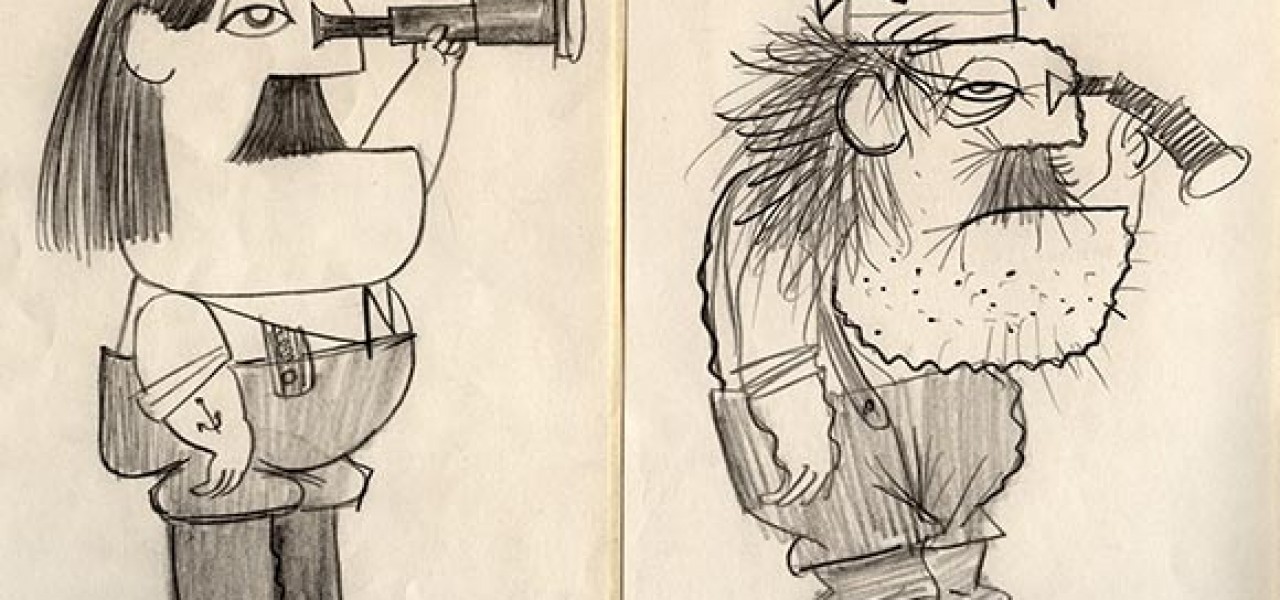
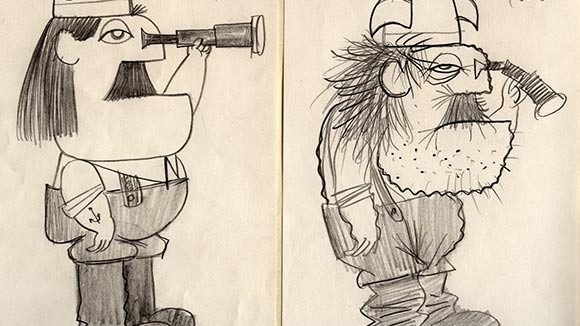
The Character Design of Ward Kimball

It is well known that, for a variety of reasons, legendary Disney director and animator Ward Kimball was demoted by Walt Disney from director back to animator in the early-1960s. In 1966, Kimball made his comeback into the director’s chair. Responsible for the shift was not only Walt’s softening stance towards Kimball but also the retirement of director Ham Luske, which opened a slot for Kimball’s return.
The subject of today’s post is Kimball’s first project upon his return to direction: the rarely seen episode of Walt Disney’s Wonderful World of Color called “A Salute to Alaska,” which debuted on April 2, 1967. (A sidenote: this was the last episode of Wonderful World of Color that Walt Disney filmed an opening for before his death.) Kimball shares a co-direction credit with Luske on the show. According to Ward’s son, John Kimball, who worked on the animated segments, the animation in it is extremely limited, and some of the scenes are simply held cels that are slid across the screen. I’ve never seen it and am unable to comment on the animated segments that Kimball directed. If anybody has the animated segments from the special, feel free to post it onto YouTube.
Thanks to some recent digging around (more about this later), Kimball’s rough character models for the “Alaska” special have been discovered. These drawings offer a rare glimpse into Kimball’s personal design sensibilities and show a great designer at work. While Kimball is well known for his design-oriented films—Toot Whistle Plunk and Boom and Mars and Beyond—those were designed, respectively, by Tom Oreb and John Dunn. Kimball collaborated closely with both artists, and his imprint can be felt throughout, but the primary visual styling belongs to other artists, as is indicated by the very different looks of each project. The drawings in this post, albeit more than a decade after those films, allow us a look at pure Kimball design.
A good starting point to compare these designs would be the project that Kimball had worked on immediately prior to this, the theatrical short Scrooge McDuck and Money (1967), which can be viewed on YouTube in two parts (Part 1 and Part 2). In that short, Kimball served only as animator and had no influence on the design. The incidental characters in that short were designed by animator Art Stevens. A while back, I posted Stevens’ designs from the short here.
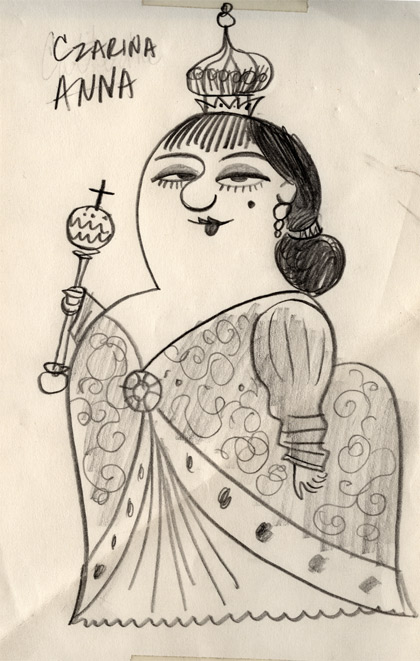
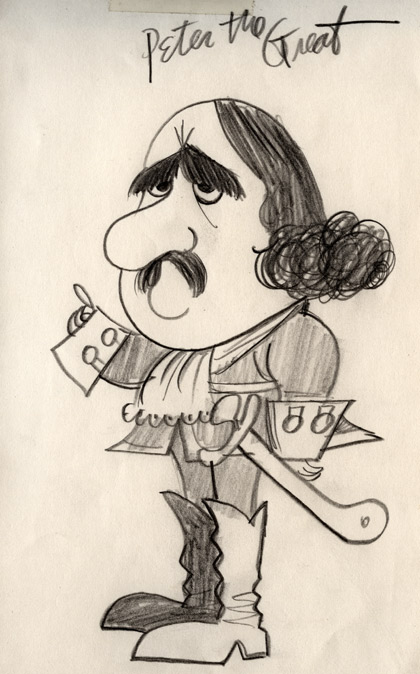
The level of design in Stevens’ work and Kimball’s is night and day. While Stevens’ designs are cute, they lack the sophistication of shape and form that only a master draftsman like Kimball could bring to the table. Kimball’s designs feel solid and complete. Despite their high stylization, they have a quality of weight and power that make Stevens’ designs look flimsy and insubstantial by comparison.


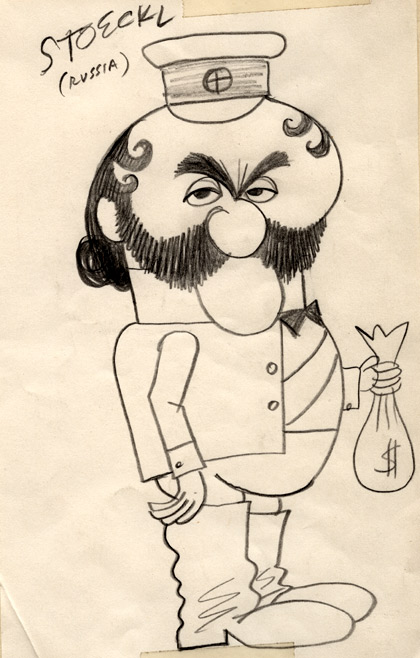
Furthermore, Kimball’s drawings are incredibly funny to look at even without the benefit of movement. Around the time he made these drawings, Kimball was teaching at Art Center College of Design in Pasadena and one of the tips he imparted to students was, “A cartoon character who is funny to look at before he is animated is going to be made funnier by the movement.” He certainly practiced what he preached.
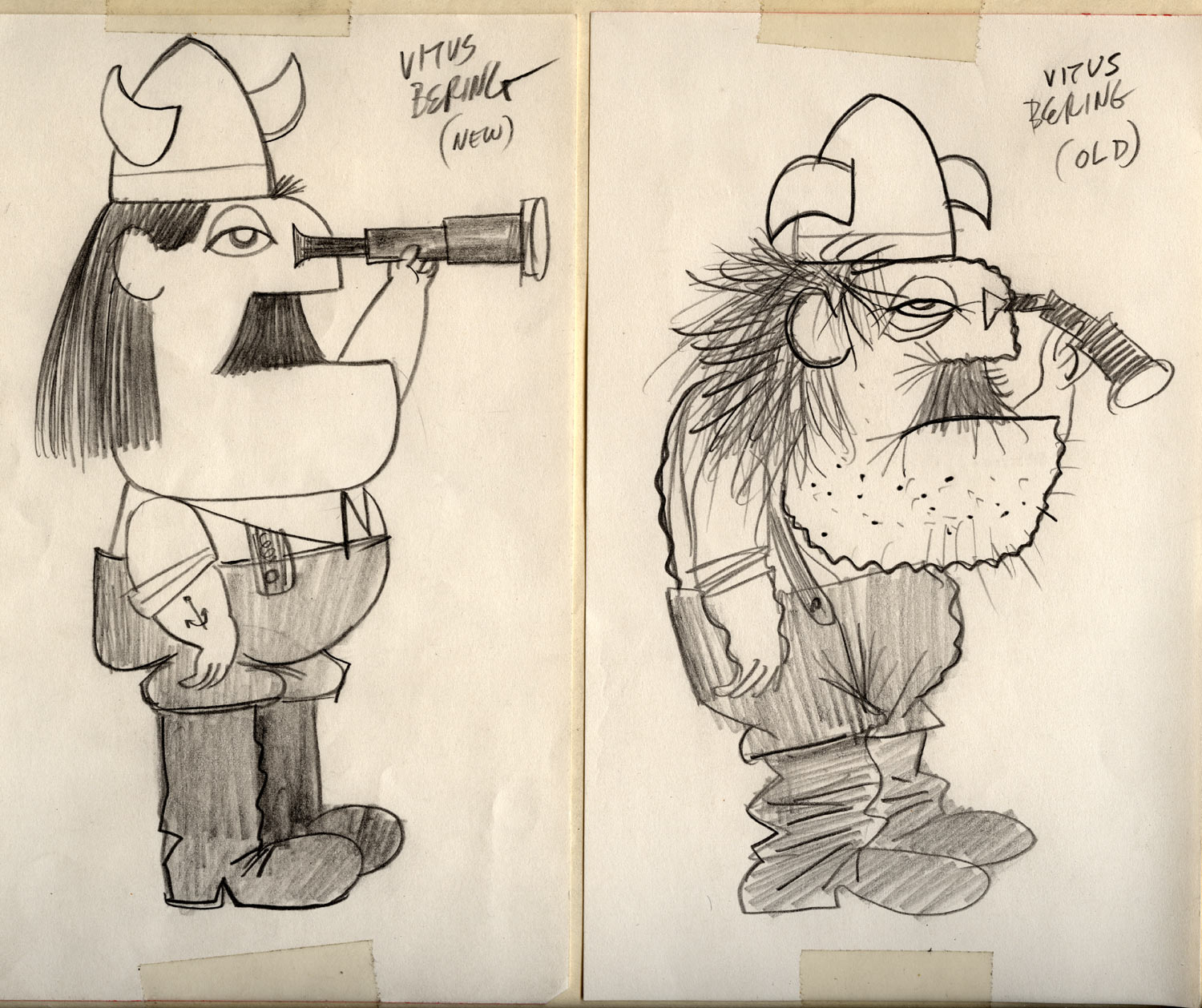
This design of “Ivan the Fur Trapper” communicates textures in the fur cap and facial hair, while maintaining the integrity of the overall shapes and forms.
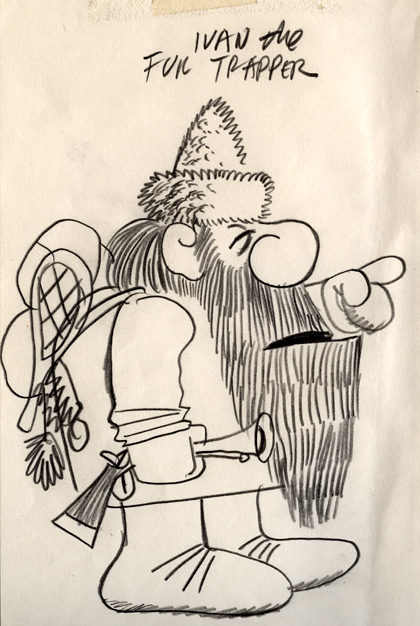
Another notable aspect of these drawings is that many of them are based on real-life figures, which allows us to observe Kimball’s gift for caricature. Ward hits hard with his caricatures of the aristocratic Russian businessmen who were running Alaskan affairs in the 1800s. I’ve managed to find online the engravings and illustrations that Kimball based his drawings on and have included them alongside Kimball’s roughs. He caricatures not only their likeness, but also their pompous poses and power-hungry, borderline maniacal, desires. Like the best caricaturists, Kimball tells us more than simply what these people look like, he tells us who they are.
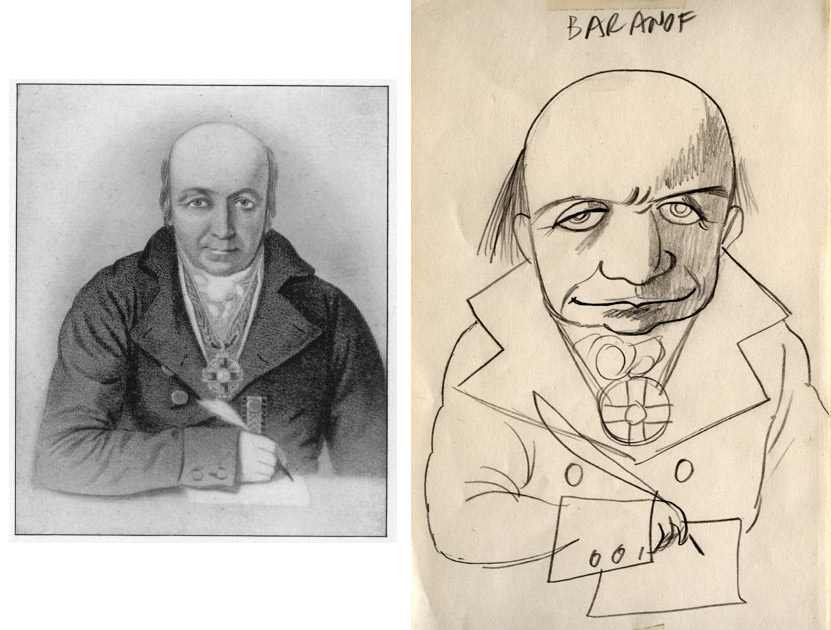
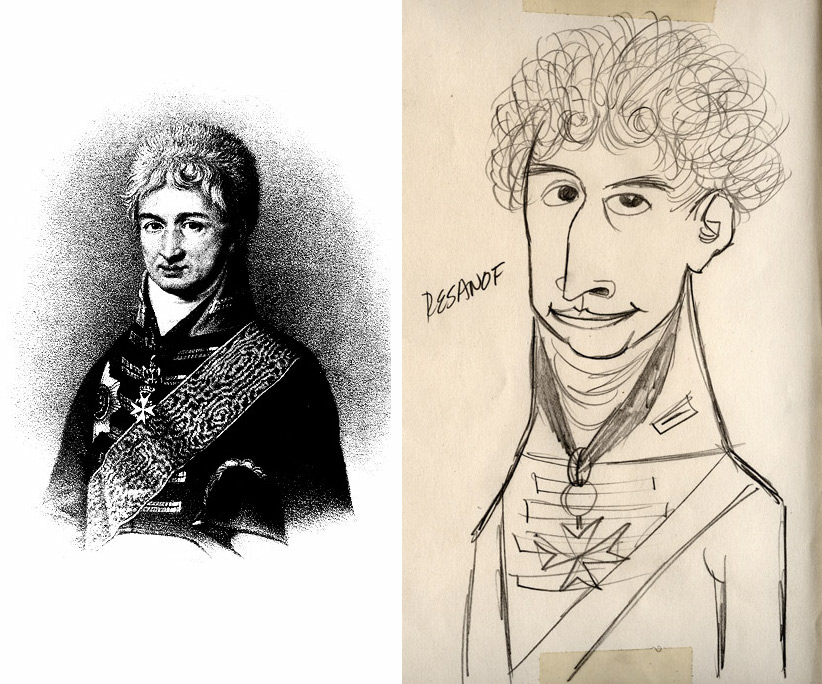
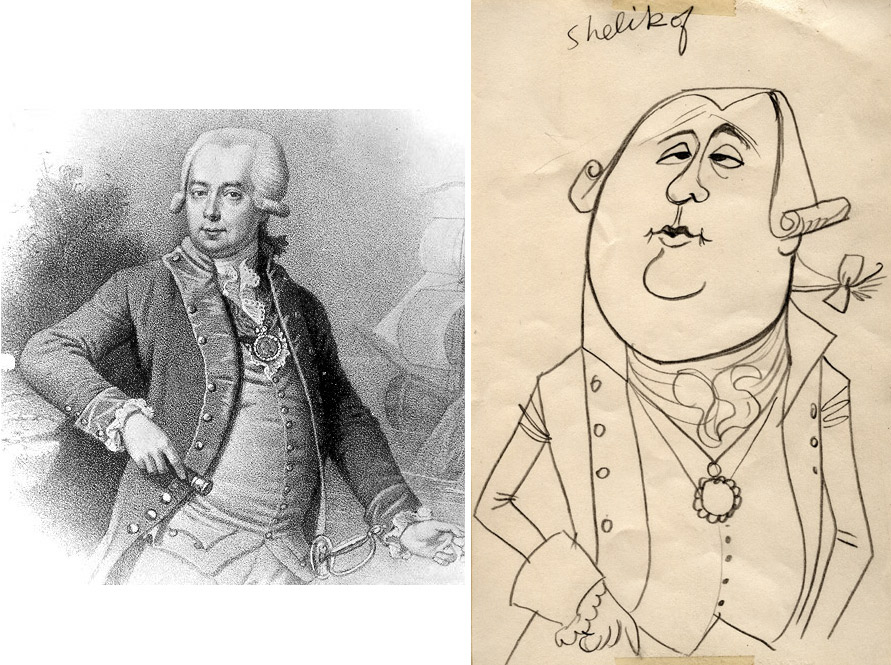
His caricatures of other historical figures are broader and cartoonier, based on the style of the cartoon, but even the cartoony rendition of US Secretary of State William H. Seward (in Uncle Sam garb) is spot-on when compared to one of his photos.
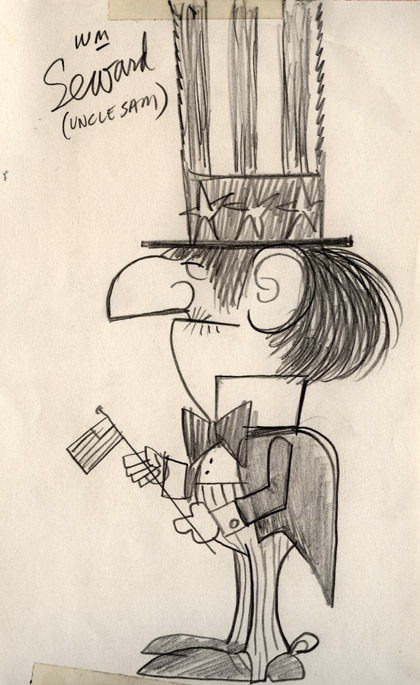
After “A Salute to Alaska”, Kimball continued directing and producing full-time until his retirement in 1973. His final years at the studio are a mixed bag—they include his last great “edutainment” short It’s Tough To Be a Bird (1969), the occasionally brilliant Dad, Can I Borrow the Car? (1970), and other projects like the “The Mickey Mouse Anniversary Show” (1968) and the syndicated TV series The Mouse Factory (1971).
A few of the images above can be enlarged by clicking on them. The rest are as-is. Enjoy!

.png)